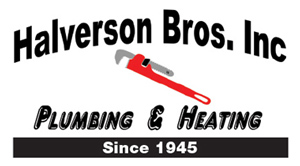
Selecting the correct furnace filter and changing it when it is dirty is as important to your HVAC system as changing the oil is to your car. Each plays a vital part in keeping its system running safely, efficiently and for a long time.
An overused furnace filter loses its effectiveness, allowing potentially harmful particles to circulate through your home. It also limits airflow, which can damage your furnace and reduce its life span.
Making certain your furnace uses a clean filter that is ideal for your needs is not only about keeping your furnace working efficiently. It’s also about providing good indoor air quality for your home.
Your health is important to the heating and cooling professionals at Halverson Brothers Inc. We've long worked with an eye on improving indoor air quality in Menomonie and western Wisconsin. Here, we’ve answered common questions about HVAC filters, including that especially tricky question of what direction do you point a filter in your furnace or air conditioner?
When Should I Replace My Furnace Air Filter?
It is critical to replace dirty air filters in a furnace or air conditioner routinely. Dirt-clogged filters cause the system to worker harder than it should because it takes extra effort to pull air through the plugged-up filter.
Officials recommend examining your furnace filter every 30 days and replacing it if it’s dirty. You’ll know if your filter needs changing because it will filled with dirt or dust. Homeowners who have pets will likely have to replace their furnace air filter more often, because an effective air filter will trap pet hair circulating in a home.
How to Find the Furnace's Air Filter
In general, a furnace air filter is normally found in the return air duct or blower compartment before the return air gets to the furnace. This makes sure air being pulled into the system is filtered before it goes through the furnace components and is heated.
Depending on the type of furnace, the filter may be located on the right, left, bottom or in some cases, on the inside of the furnace. It's typically housed in a slot, frame or cabinet for convenient access and replacement. Always refer to your furnace's owner manual for details concerning filter location of the furnace in your home.
Is My Furnace Filter Just a Type of Air Filter?
The easy answer is, yes. In HVAC, a furnace filter and an air filter or air conditioner filter are essentially identical. While people may call them different things based on the current season— summer or winter—they are all filters that clean the air in your home.
They each eliminate dust, allergens, bacteria and other airborne debris from the air that is drawn into the furnace and air conditioning system, making sure the air flowing through your home is clean and safe.
What Is a MERV Rating and What Rating Is Best for Me?
Once you track down your old furnace filter and decide when it should be changed, it’s time to select a replacement. That means deciding on the level of filtration that you need. One method to do this is by selecting an appropriate MERV rating for your needs.
MERV is an abbreviation for Minimum Efficiency Reporting Values. The MERV rating calculates the effectiveness of air filters at trapping airborne particles. The rating scale ranges from 1 to 20, with bigger numbers indicating a greater ability to filter smaller particles.
Experts say a filter with a MERV rating between 8 and 13 offers a good balance between having good indoor air quality without unnecessarily restricting airflow. However, people with specific health conditions might need to purchase a filters with a higher MERV rating.
Which Way to Put the Air Filter in a Furnace or AC Unit
Installing an air filter in a furnace or air conditioner the proper way is important for the efficient operation of the heating or cooling system. Air filters have a particular direction, indicated by an arrow located on the side of the filter frame. The filter should be installed with this arrow pointing toward the furnace or AC, which is the direction of the airflow. If you're unsure about the airflow direction, try to remember that air always moves from the return duct towards the heat or cooling source. Therefore, make certain the arrow points at the furnace or air conditioning unit.
Many people struggle with which direction to install their air filter. To help remember, consider snapping a quick photo with your cell phone after the filter has been properly installed by a professional. Or, you also could ask a technician to use a marker to write on the outside of your furnace which direction the filter should point. A great time to ask about this is during a scheduled furnace maintenance call.
Changing Your Furnace's Air Filter
Switching out the filter on your furnace or air conditioner is a quick and easy process. Here is a step-by-step list of how to retreive a dirty air filter and replace it with a new one:
- Turn off your furnace: Make a point to turn off your furnace before starting up the process.
- Locate the furnace filter: Typically, the filter is positioned within the furnace or in the air return vent. Make note of which direction the arrow points on the filter, because you’ll want the arrow on the clean filter to point the same way.
- Remove the old filter: Be diligent not to knock out any dust or debris.
- Note the date: Write down the date you changed filters on the new filter's frame. This will make it easier to keep track of when it's time for the next change.
- Insert new filter: Put in the new filter with the arrow pointing at the furnace, which is the direction of airflow and should be the same direction the arrow pointed on the old filter you are replacing.
- Secure the filter: Make sure the new filter fits correctly and close any latches or clips that hold it in place.
- Turn on your furnace: Once the clean filter is completely secured, you can turn your furnace back on.
Can a Dirty Air Filter Cause Problems for a Furnace?
The simple answer is, yes, a dirty air filter can cause a furnace to stop working or limit its lifespan. Changing your furnace or AC filter is one of the easiest things you can do to keep your system running correctly.






